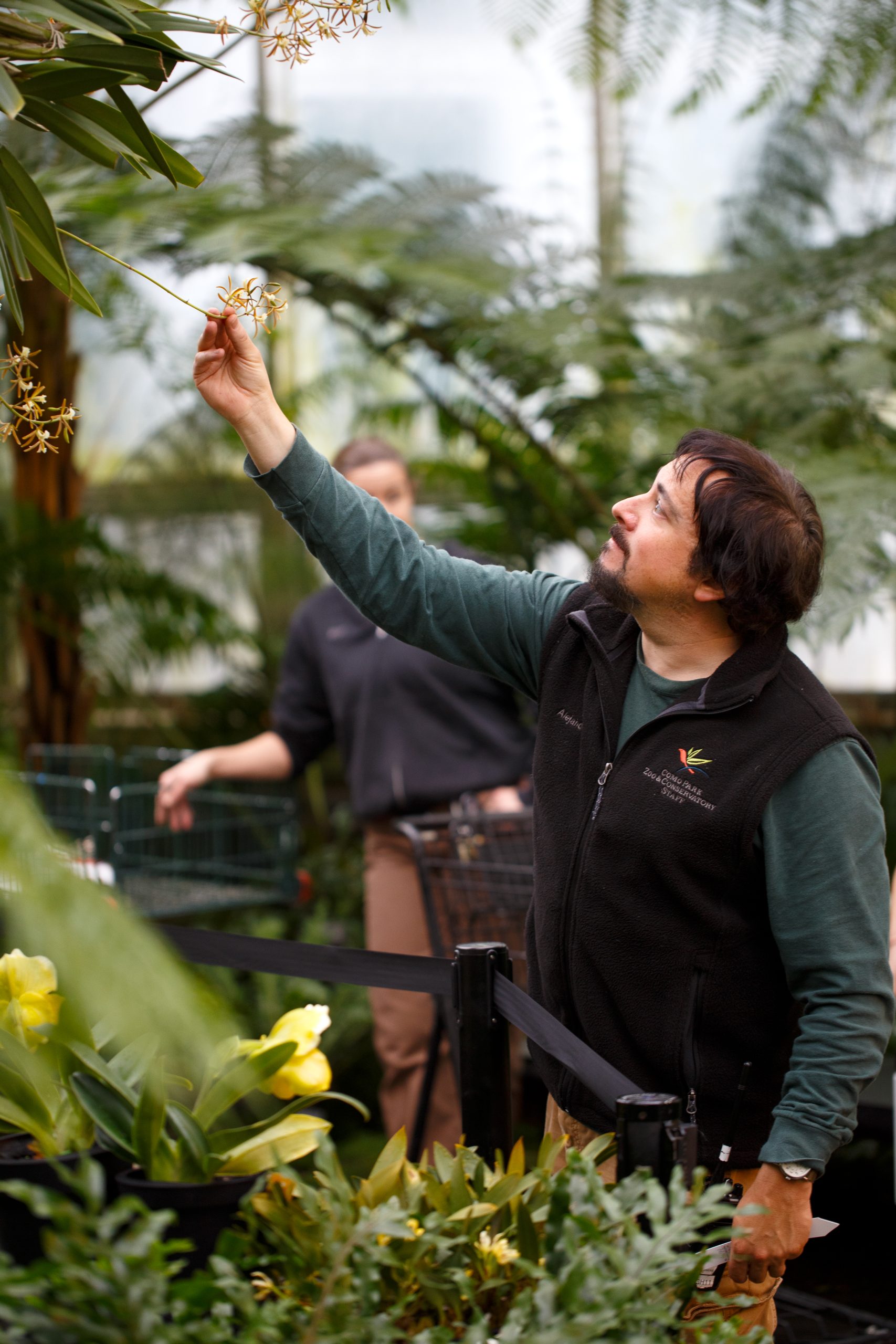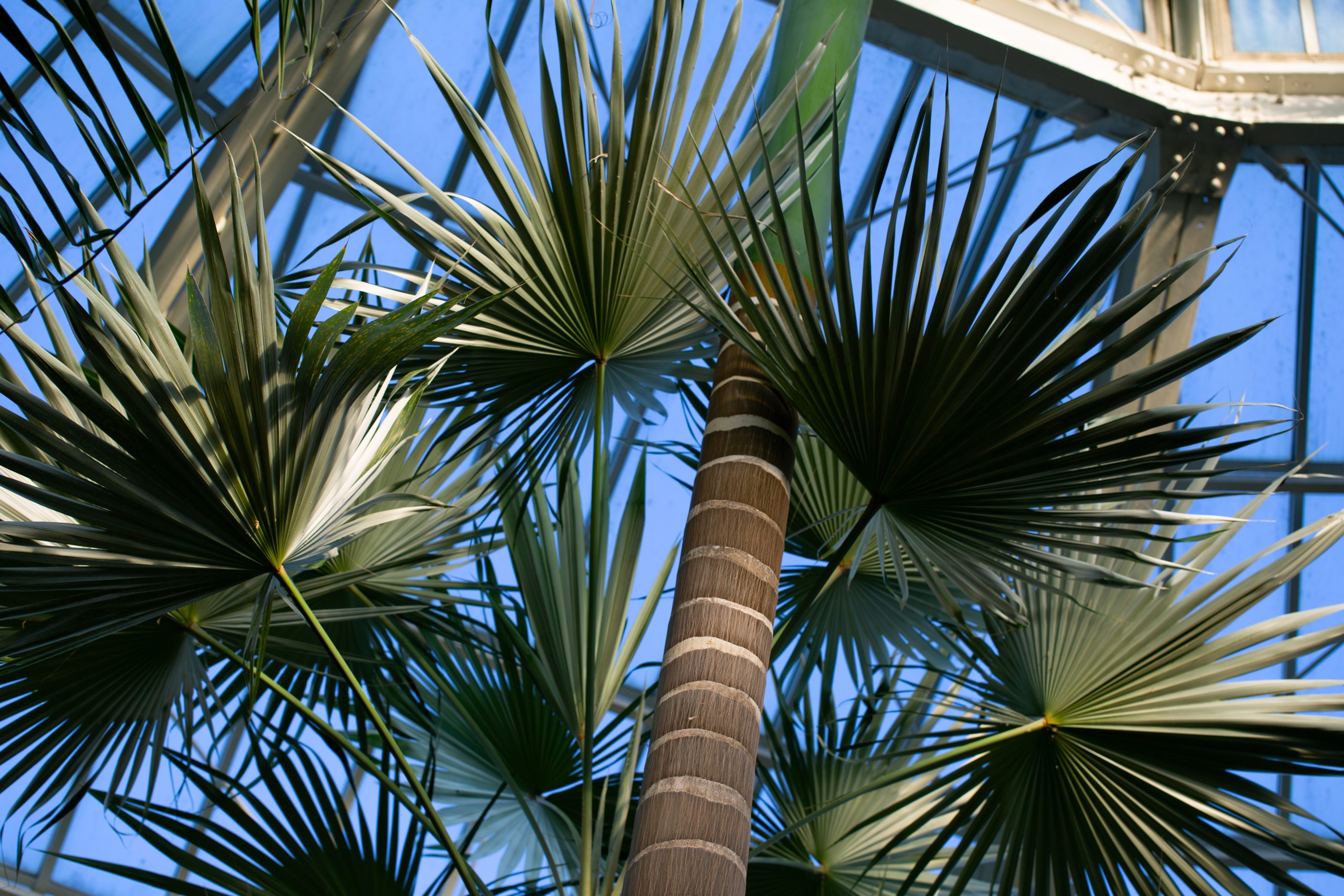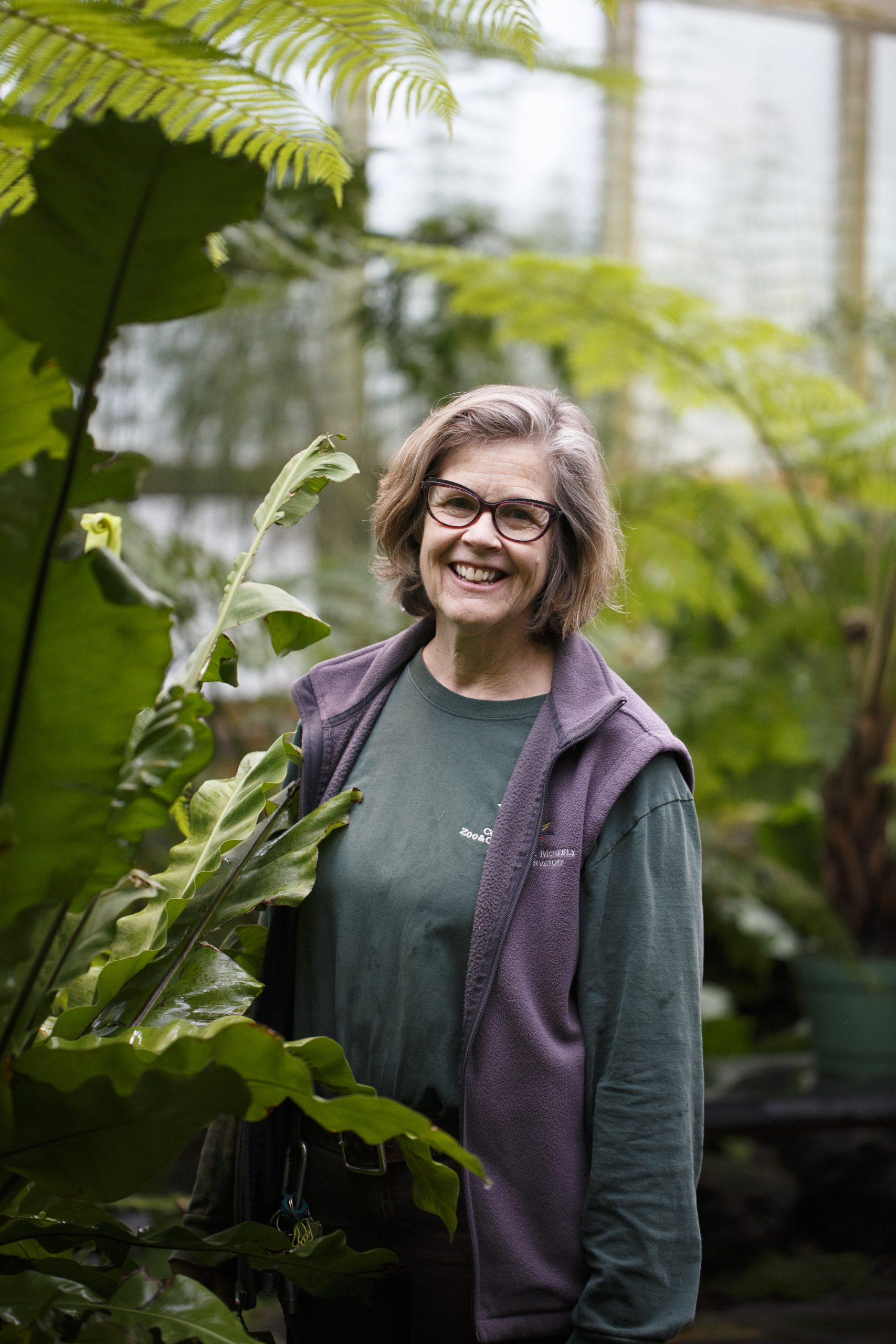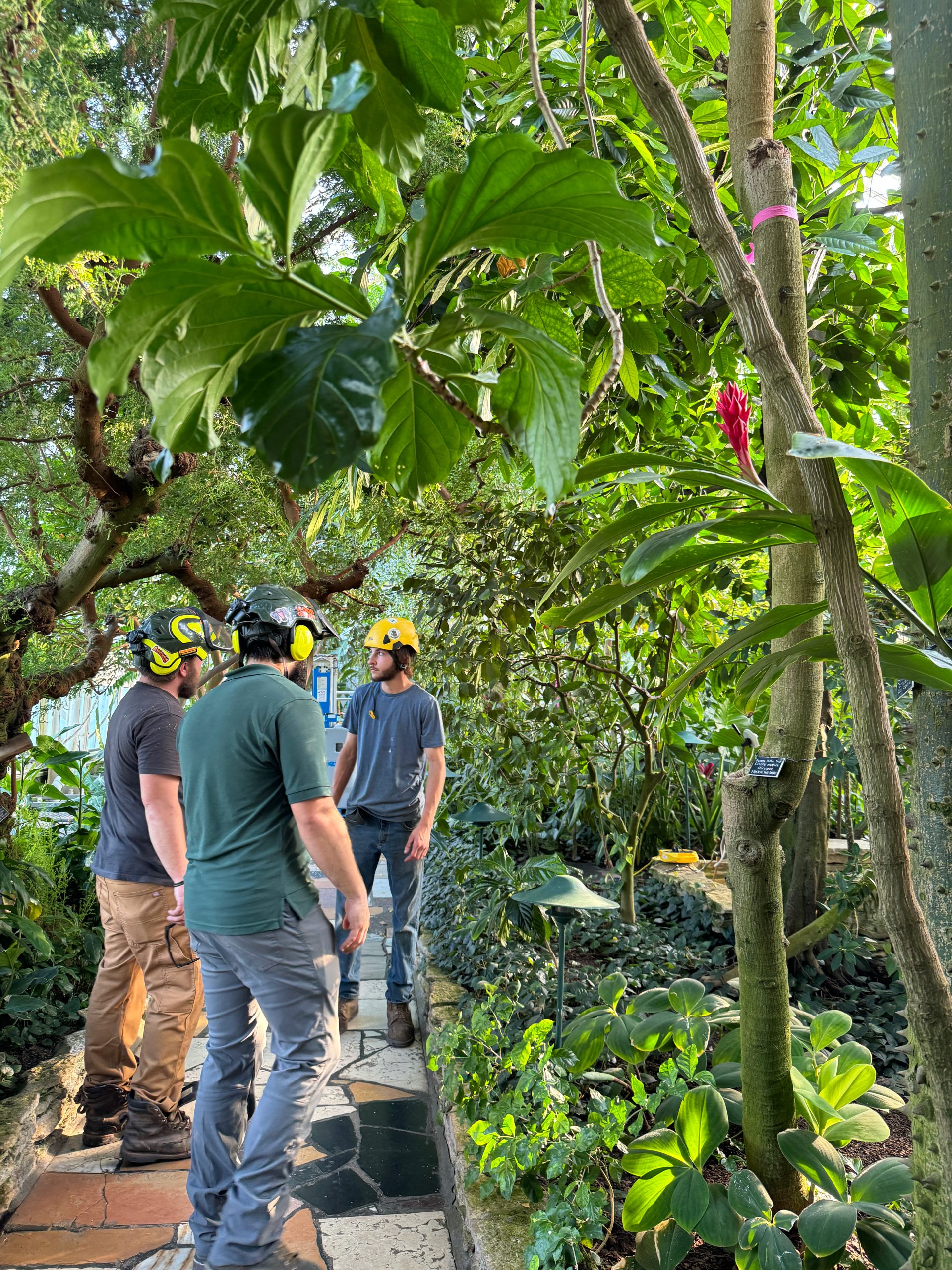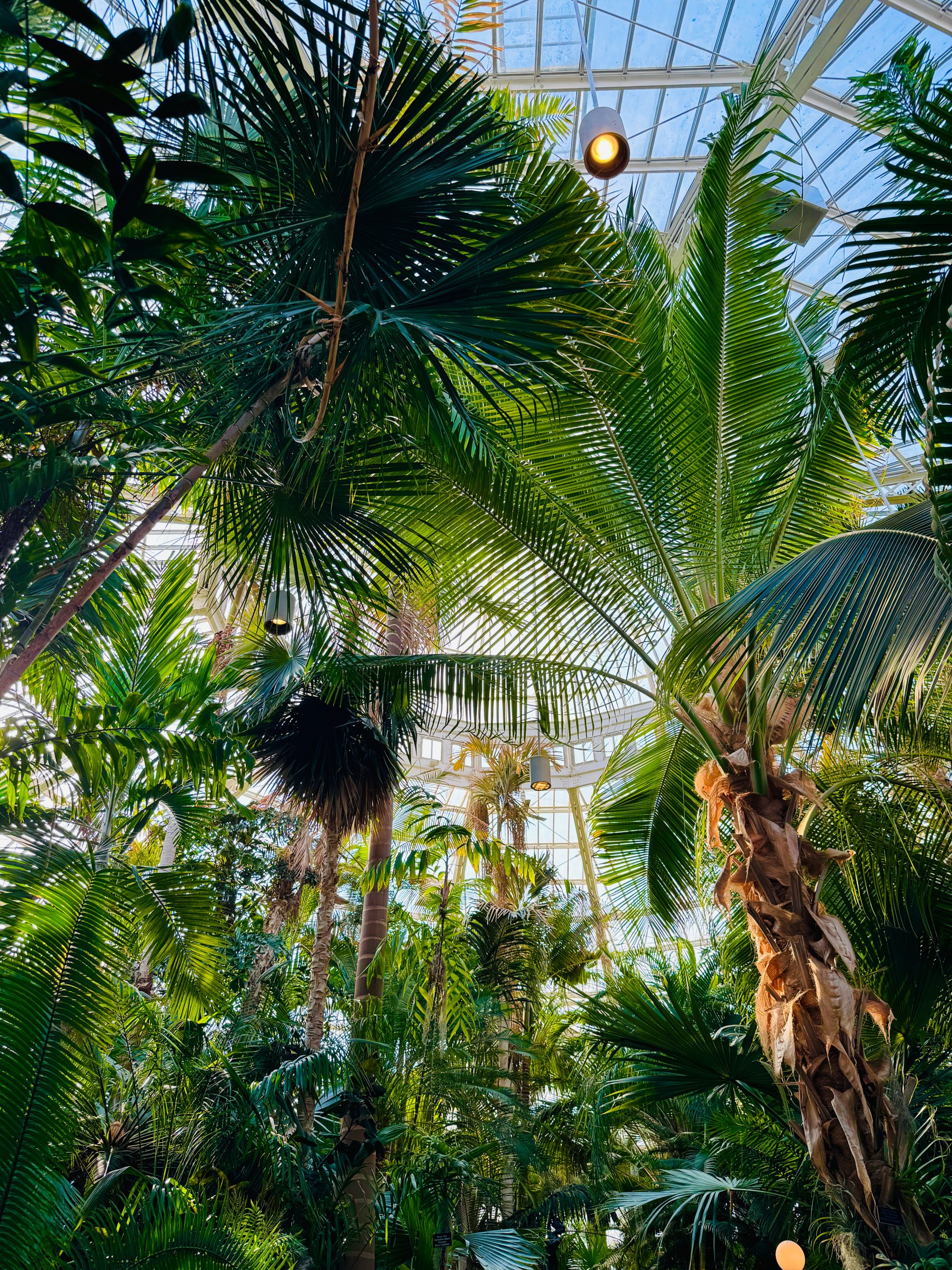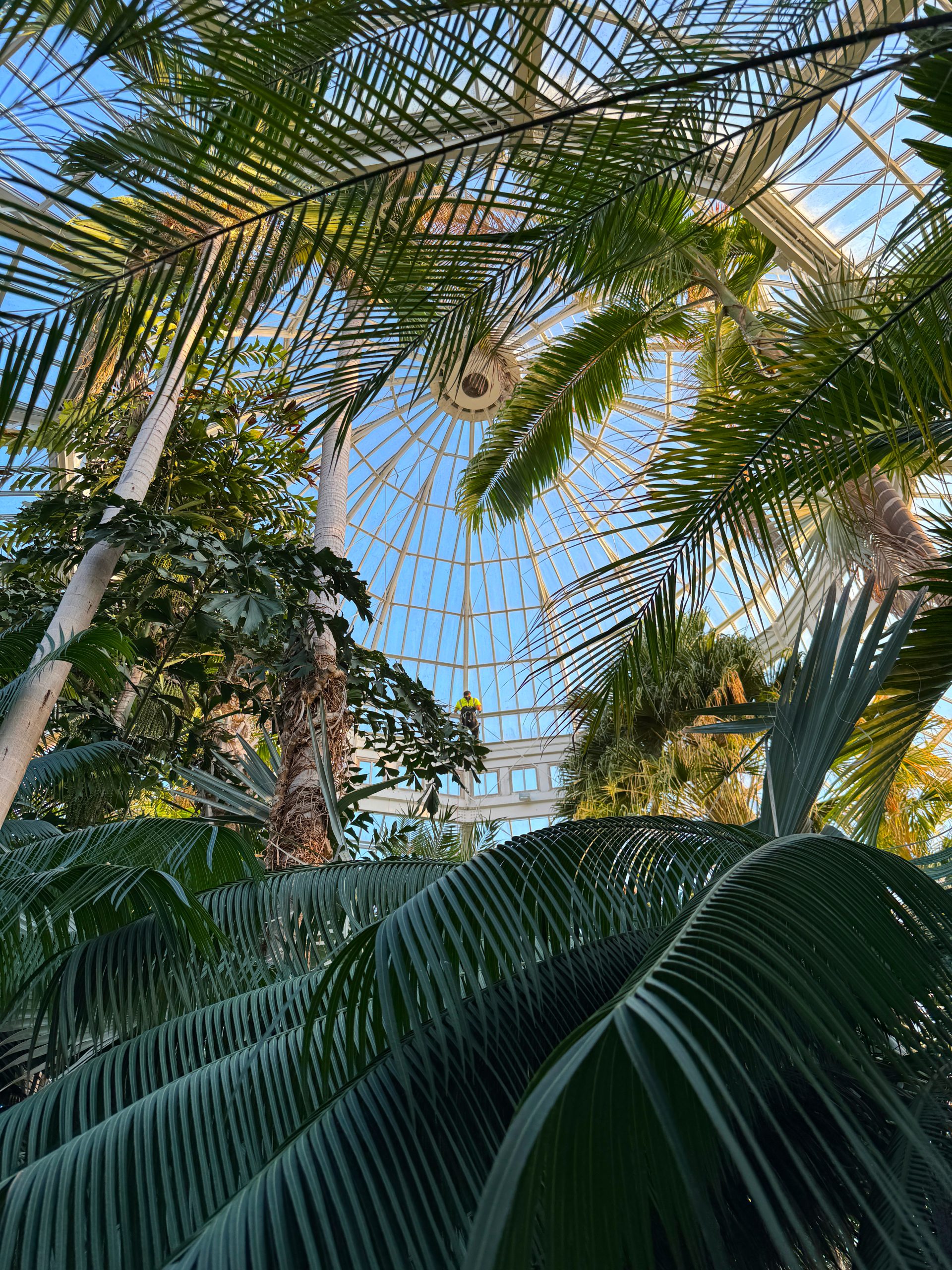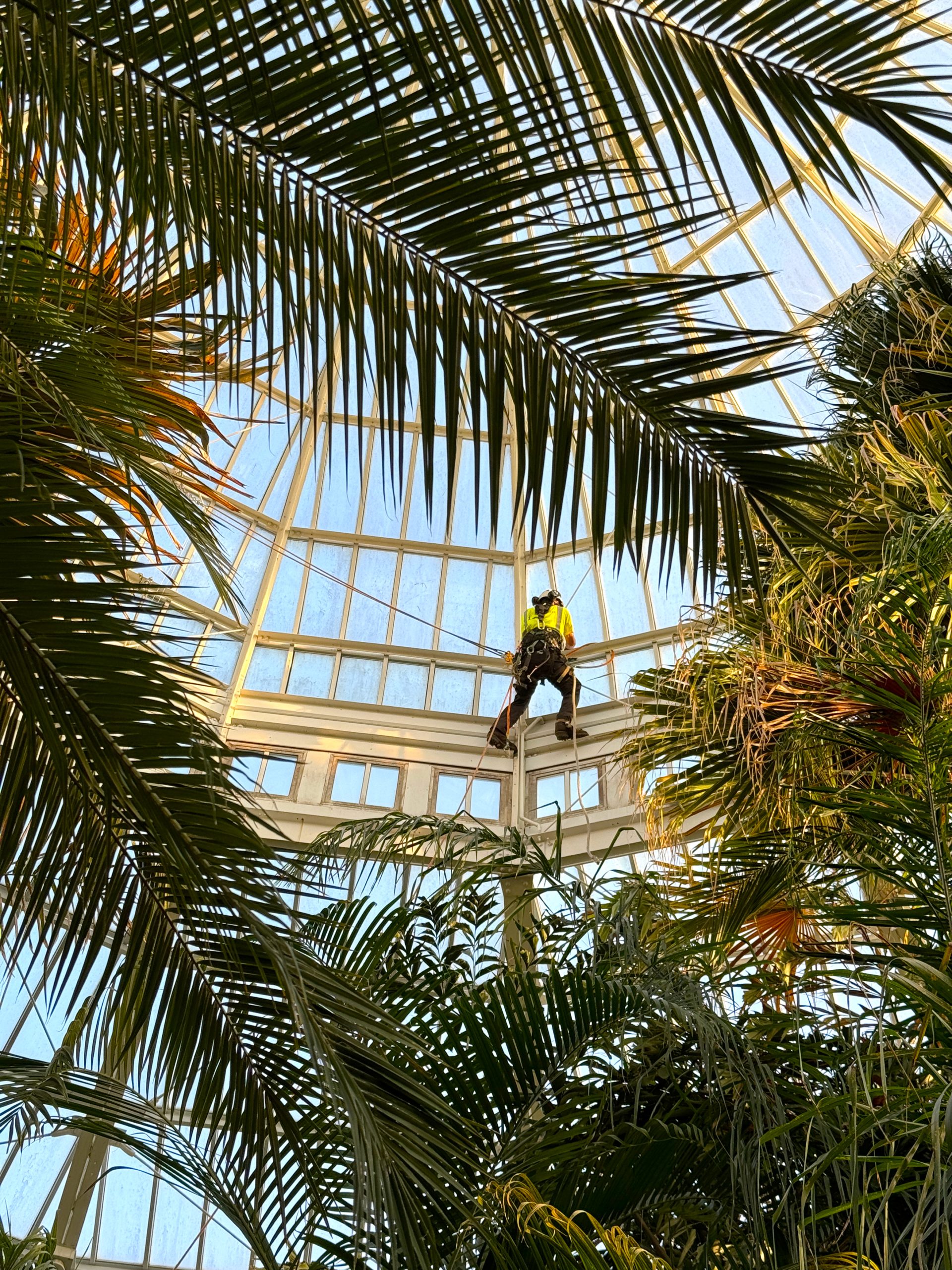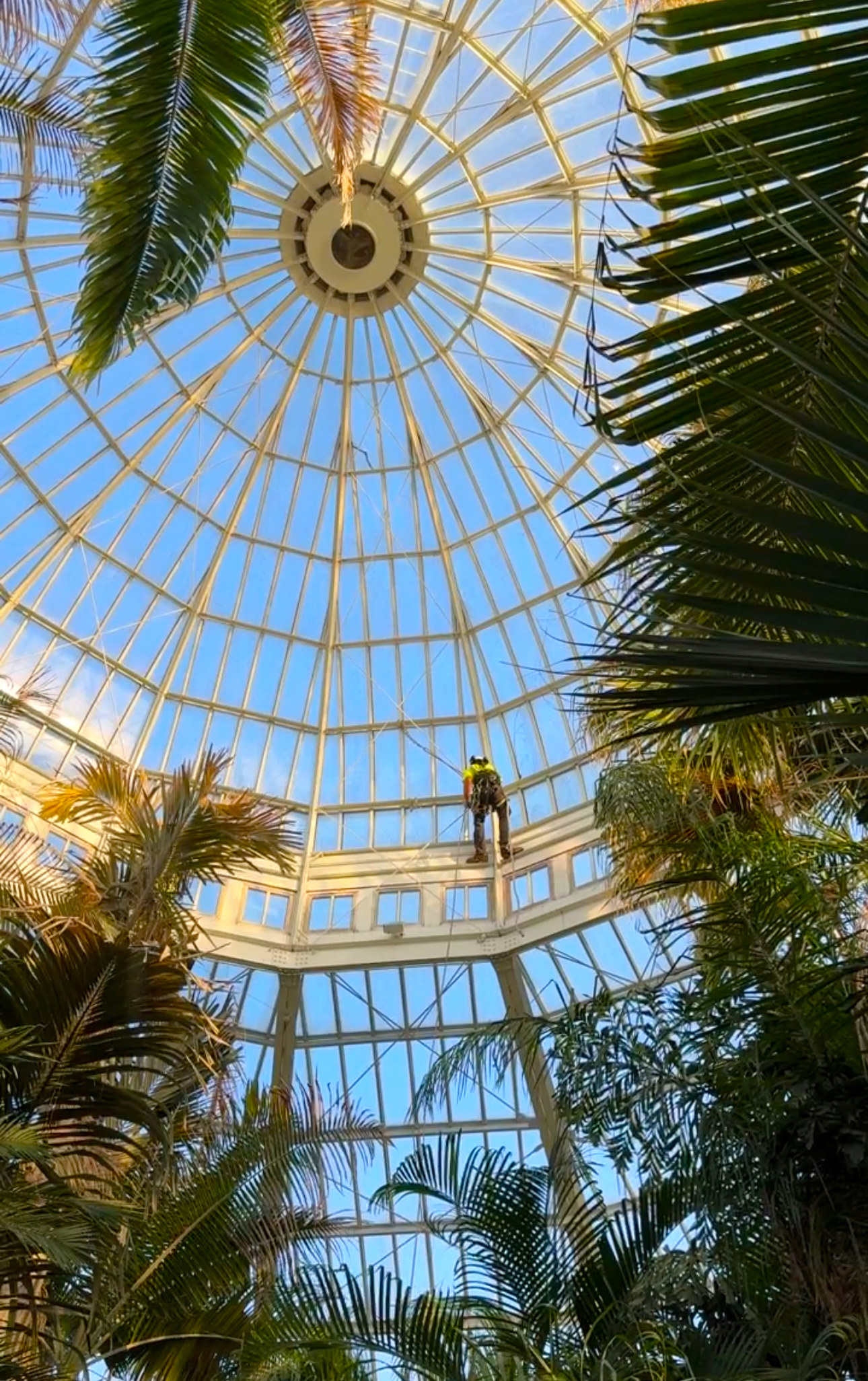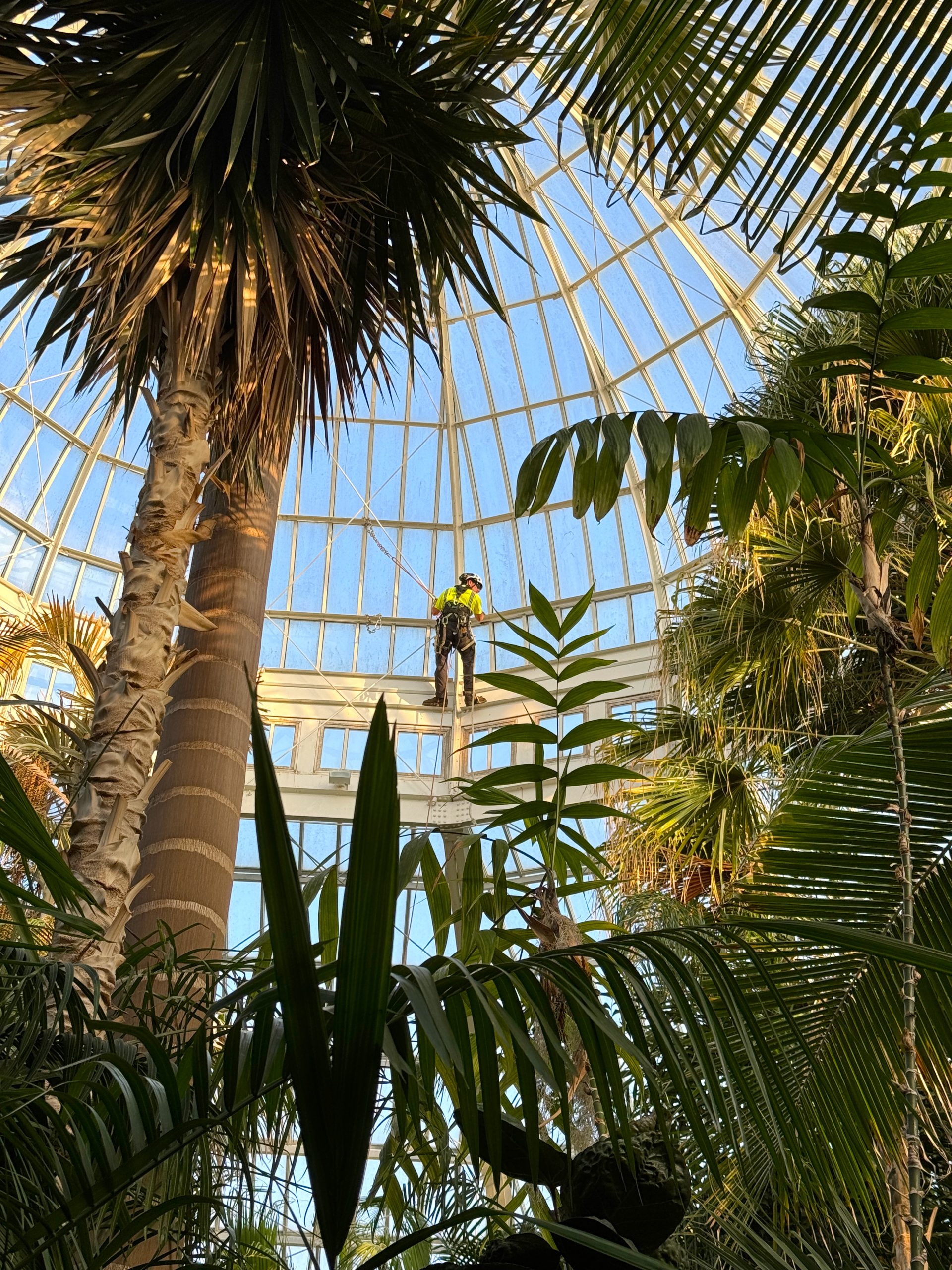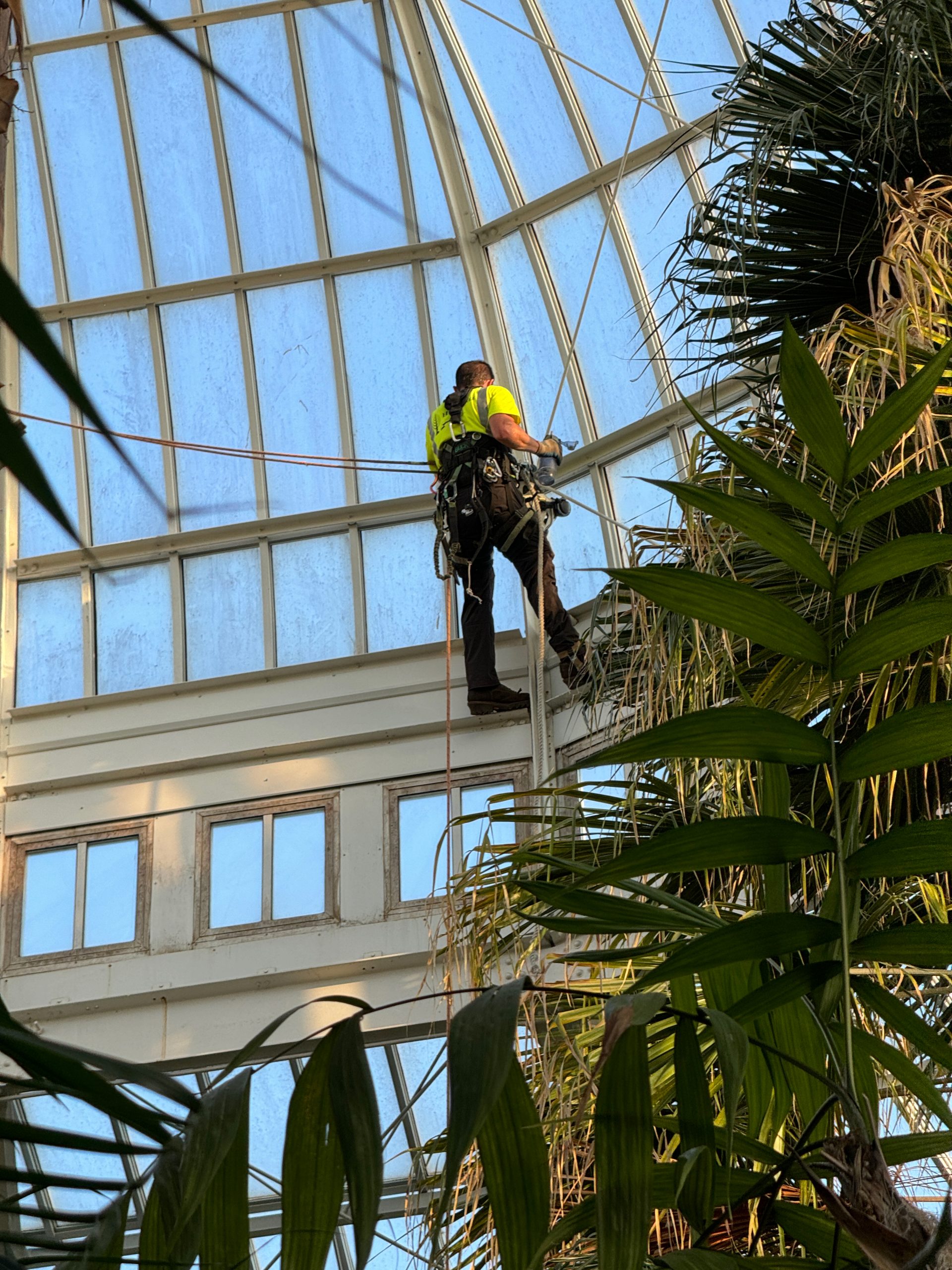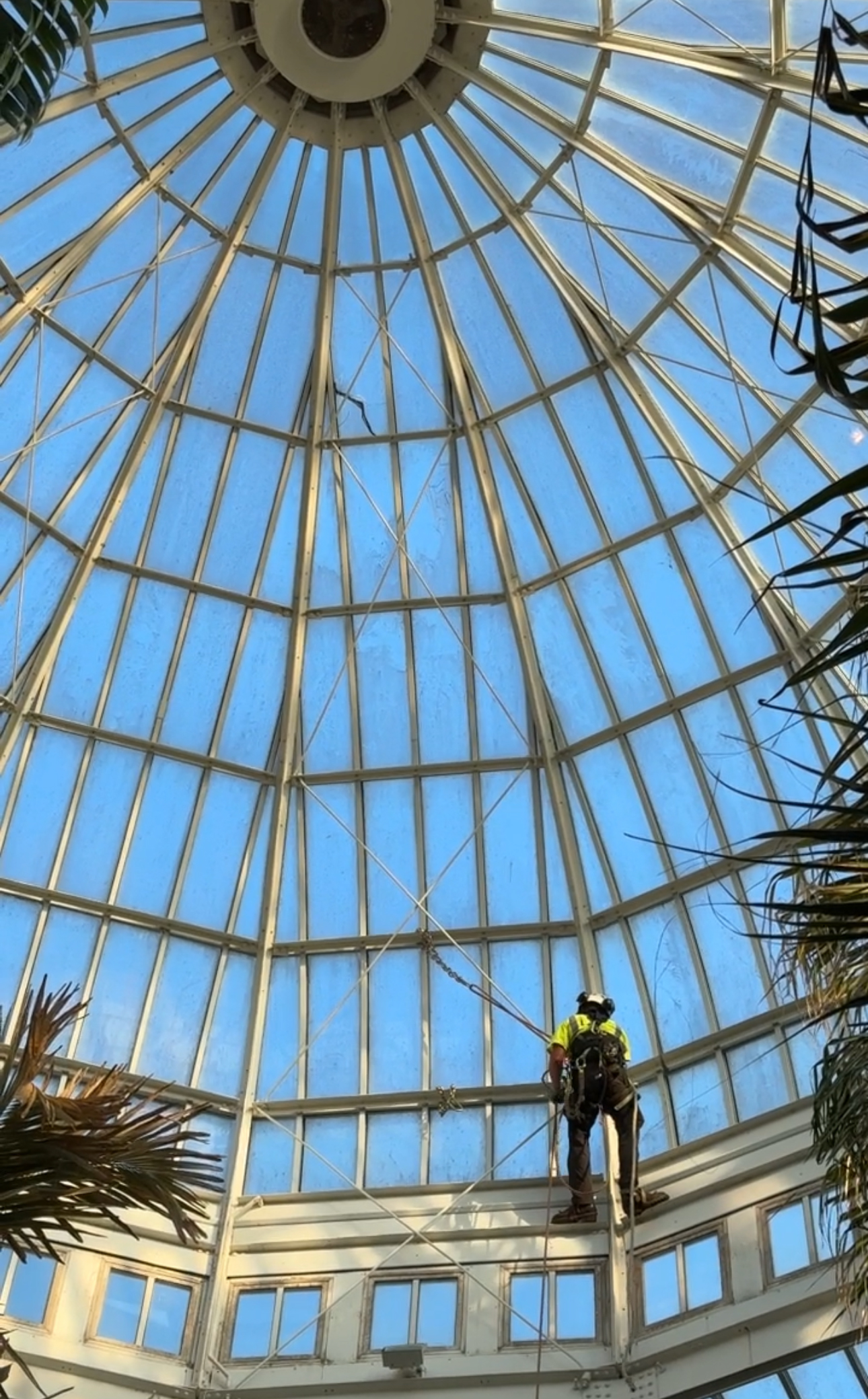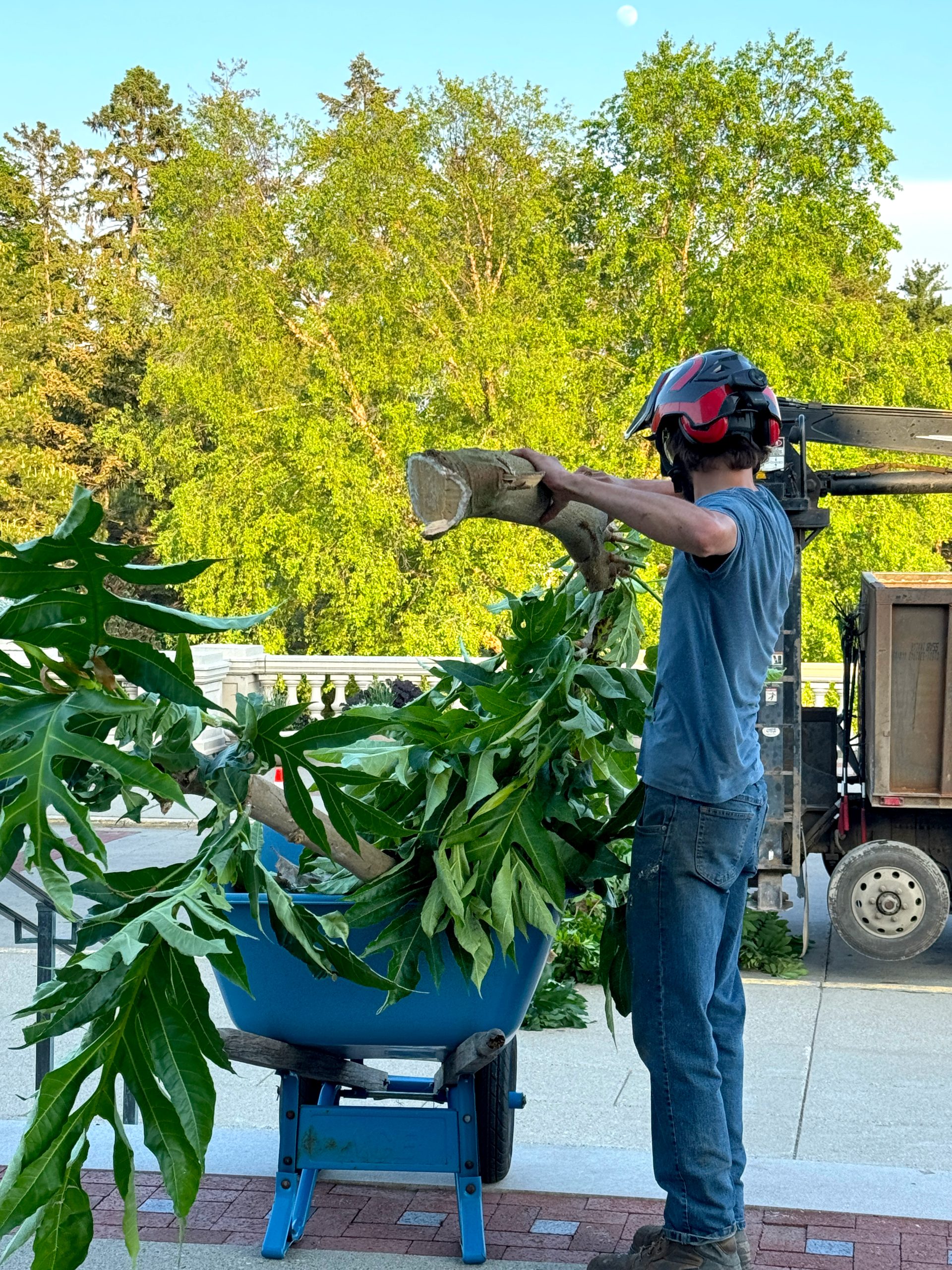Visitors to the Marjorie McNeely Conservatory’s historic Palm Dome may notice something different this season—a lot more sunlight.
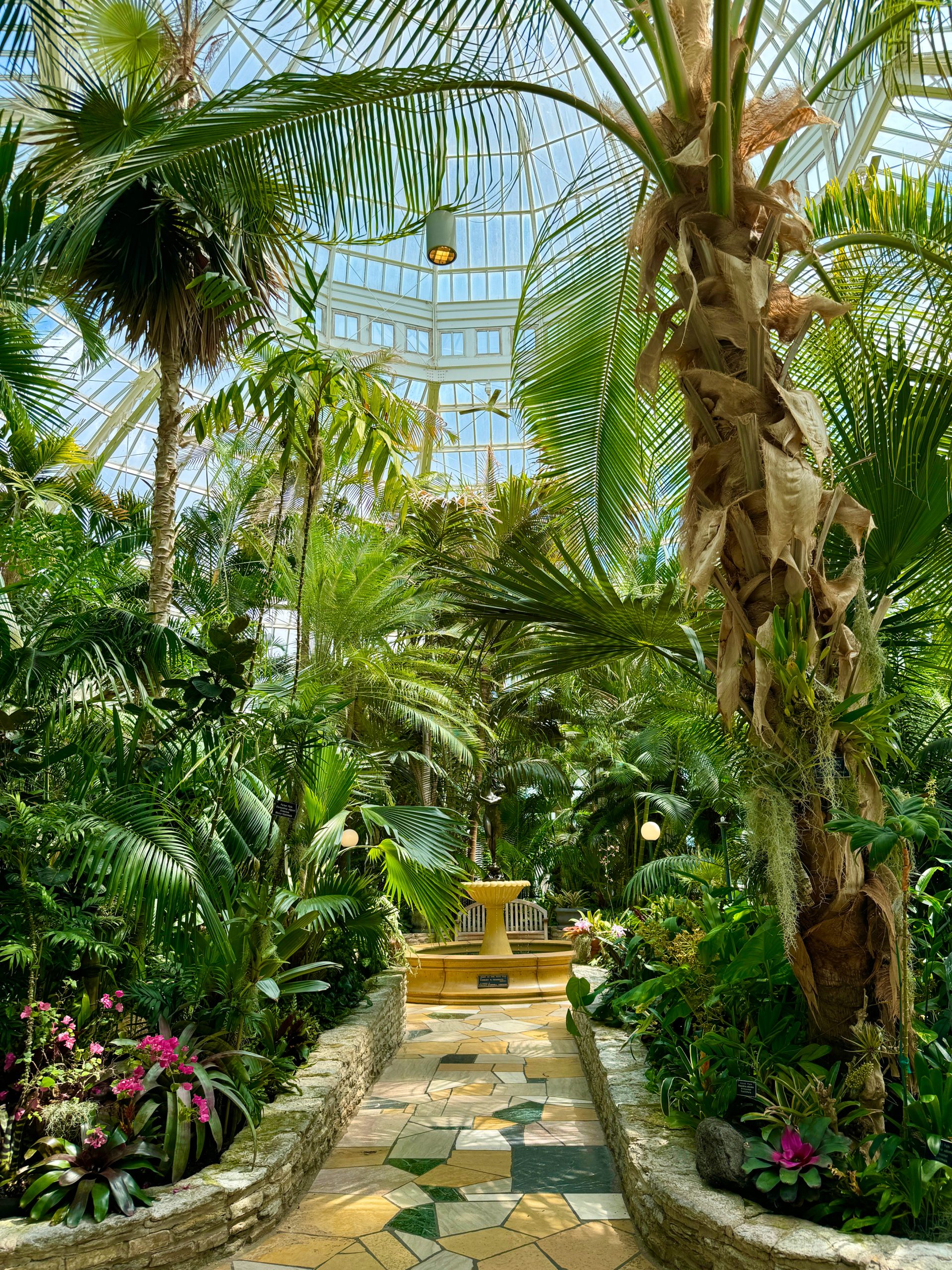
The brighter feel of the room is the result of an extensive pruning project to remove several older palms that had grown so tall they were crowding into the glass cupola. Unlike species that can be trimmed to grow outward, “the growing point of a palm is at the top of the plant, so the pressure of pushing into the glass would eventually kill the plant,” explains Karen Kleber Diggs, horticultural supervisor.
The strength of these tropical palms can also put the Conservatory’s historic dome at risk.
“A couple of years ago, we had one of the palms on the side actually grow up with a very stiff frond that punched its way into the grout” between the cupola’s glass panes, she says. “These are very powerful plants.”
Typically, the Marjorie McNeely Conservatory works with the city’s forestry department to provide pruning help, but with the spread of emerald ash borer, trimming Como’s tropical trees wasn’t possible this year. That’s where Como Friends stepped in, providing $70,000 in grant funding to help Como’s campus move ahead with tree maintenance in the Palm Dome, the North Garden and a few other locations around campus.
“Grants like this are one of the important ways that Como Friends helps the Marjorie McNeely Conservatory achieve its mission,” says Jackie Sticha, president of Como Friends. “If city funding or park resources are pulled in different directions, community support helps to ensure that Como can move ahead on urgent or emerging maintenance issues.”
New palms—also provided with funding from Como Friends—will take their place as part of a phased succession plan visitors will see in the coming months. While gardeners are always sorry to see 20-year-old palms go away, the extra space has allowed horticulturist Alejandro Balderas to redesign the understory of the palm room. “He’s been utilizing a lot of our bromeliad and orchid collection to create these colorful accent points he calls vignettes that bring a new focal point to the ground cover space,” says Kleber Diggs. “He’s seeing things in that room with fresh eyes, which is something our visitors may notice this season, too.”
